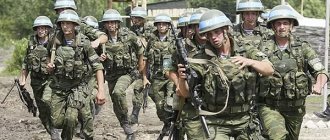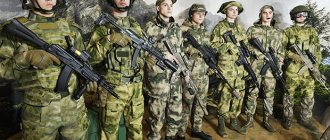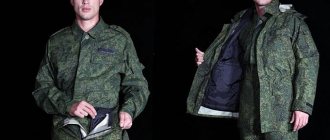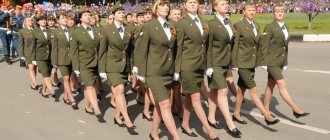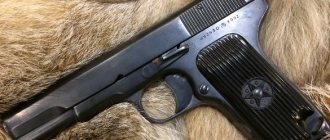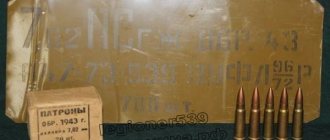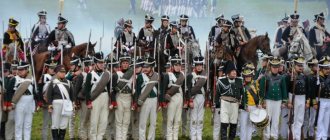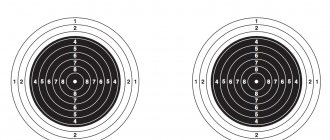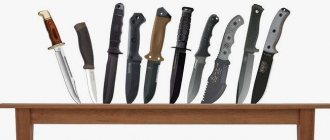The military uniform of the armed forces of the Russian Federation has always been distinguished by certain features. They are divided by color and purpose. Military uniforms can be intended for daily use, for field activities and for festive occasions. All these types of clothing are also divided into summer and winter options. The Ministry of Defense has carefully studied this issue, detailing orders on this aspect of the life of military personnel. The case affected both the winter uniform of the RF Armed Forces and the summer uniform.
Global reform
The purpose of equipment for military personnel is to ensure effective combat capability. Today, army uniforms are divided into several types:
- Front door for participation in award ceremonies, parades and other special events.
- Field, designed to be worn during service, combat campaigns and in peacetime when providing assistance to the civilian population (emergencies, disasters).
- Office for certain occasions.
In Russia there have been several attempts to dress up the military. They all ended in failure. The defense budget was spent on failed projects. At the same time, the American army was constantly improving clothing for its troops. She became more convenient and comfortable. US industry placed great emphasis on innovative technologies and materials.
In the Russian Federation, the modern history of army clothing begins in 2007. At this time, the Ministry of Defense organizes a competition among designers to create sketches of the uniform. The winner is fashion designer Valentin Yudashkin.
Until 2009, specialists finalized the sketches and created the final version of the uniform. As a result, a suit was created that was very similar to the equipment of American soldiers. But the developers themselves did not think so and did not agree with the general opinion.
Cons of the 2009 form:
- The equipment is based on the equipment of the American military, which operates in completely different weather conditions.
- Winter equipment was of poor quality. The soldier was cold in it, which caused an outbreak of ARVI.
- Low-quality fabrics, threads, and accessories were used for sewing. Clothing immediately wore out, could not withstand high loads, tore, and became deformed.
Dissatisfaction among the target consumer forced the Department of Defense to carry out global reform.
The developers had to resolve several issues:
- Refuse plagiarism. It was impossible to take equipment from other countries as a basis. It was necessary to focus on the weather conditions of Russia.
- Carefully work out the field option, since it is considered the most important and is used by soldiers most of the time.
The updated kit consisted of several parts. The price of the equipment was 35,000 rubles.
Field uniform
The reform began with shoulder straps. In the 2009 version, they were located “on the stomach”. This principle is used by NATO troops. Therefore, Russian officers were unhappy with this circumstance. Because of this, shoulder straps were placed on the shoulders according to the old principle. Chevrons were located on the left and right sleeves. Among the innovations of the failed version were fitted overcoats with Velcro and warm sweaters, which were reserved for officers. Boots with foot wraps were never replaced by comfortable boots.
All the accusations fell on Valentin Yudashkin, who had to give a detailed answer to the media. It turned out that the clothes released into production differed sharply from those proposed by the fashion designer. In the modified version, low-quality materials and fittings were used. As a result, all that was left of the designer’s idea was the concept.
The 2015 uniform was developed taking into account the suggestions of the military personnel themselves. The updated version was multi-layered, which allowed each fighter to choose clothing items taking into account the assigned tasks and operating conditions.
The improved kit includes the following elements:
- basic suit;
- boots;
- jackets;
- balaclava;
- synthetic belt;
- socks.
For equipment, high-quality fabrics with a good composition were used: 35% polymer, 65% natural cotton thread.
Our soldiers received improved uniforms in 2015. Today, a million servicemen of the Russian Armed Forces wear the new uniform.
A living corpse wrapped in a sheepskin coat: In what form does the army survive the bitter cold?
The frost grew stronger and so did we. The forecasts of the “All-Russian shaman” Roman Vilfand , perhaps the main weather forecaster in Russia, are coming true. The cold is approaching Moscow, in Arkhangelsk it is already well beyond minus 20, in Anadyr and Tiksi it is now minus 30, and it will be lower. It's cold in other regions too. They are “warming up” in the south of the country, but even in Simferopol and Sochi the weather is far from comfortable. How does the Russian army, which does not sit in warm barracks, cope with the cold? And, most importantly, what clothes is the soldier currently wearing on duty?
The classic winter uniform of the Soviet army - felt boots, padded trousers and a jacket (the legendary “quilted jacket”), a hat with earflaps, fleece underwear, three-fingered mittens (index finger for shooting from a machine gun), a sheepskin sheepskin coat for guard duty - all this has disappeared into oblivion. In the modern Russian army, there are no longer gray “overcoats” with “fish fur”, tarpaulin boots with foot wraps made of flannelette (“kirzachs”, by the way, there are still more than a million pairs stored in warehouses). They haven’t remembered about front-line hundred grams since the Great Patriotic War. The increased amount of lard, onions and garlic remained in use for “warming” in winter, and a new form of clothing appeared - warm and comfortable.
In the army, the summer, demi-season and winter uniforms are now called “suits” - this is a designation for rear personnel from the logistics department of the Ministry of Defense. The barracks has its own terms, where boots are ankle boots, a jacket is definitely not a sheepskin coat, but a peacoat, or just a jacket, but not a suit. Actually, the point is not in the names, but in the quality of the soldier’s winter military uniform, which is part of the VKPO (all-season field uniform set). Here I would like to ask, as in the Russian folk tale “Morozko”: “Are you warm, girl (soldier, in this case)?”
Modern military uniform and rules for wearing it
The Ministry of Defense presented updated clothing for the Russian Armed Forces in 2012. The basic summer outfit for wearing at temperatures above +15 degrees included the following elements:
- Short, lightweight underwear made of lightweight knitwear. It allows the skin to breathe, absorbs and removes moisture from the body well, and dries quickly. Fabric composition: 100% polyester.
- Summer field suit. Ideal for daily wear. Effectively repels water, has reinforcement in the elbow and knee areas, and the seat area. Made from fabric based on natural cotton and polyester.
The updated version also offers military personnel a weather-sensitive layering system. The system is designed for temperatures from –40 to +15 degrees. The following layers are used:
- Polyester underwear.
- Fleece underwear (insulated).
- Jacket with thick fleece pile.
- Windbreaker with effective against bad weather and sand.
- Demi-season suit: jacket, pants with suspenders, cap.
- Wind and waterproof suit.
- Insulated vest.
- Insulated winter suit.
Protective headwear includes a balaclava and a fur hat with ears.
Modern army men no longer use foot wraps. Each soldier is given socks at the rate of 1 pair per month. In the future, the number of pairs will be increased several times.
In winter, military personnel can wear lightweight or fleece underwear. It is allowed to wear two sets at once if field conditions involve working at very low ambient temperatures.
In summer clothing, all elements of outerwear are treated with water-repellent compounds. The special coating keeps the uniform dry during two hours of rain.
If soldiers are in conditions of increased stress, they are given a kit with reinforced elements that provide additional protection from mechanical influences.
In the fall, military personnel can wear a fleece jacket and a windbreaker jacket. These two layers will protect you from cold and strong winds. The demi-season suit also features quick drying and reliable protection against water.
To protect against heavy rain, a wind- and waterproof suit with taped elements is provided that prevent water from getting inside.
Advantages and disadvantages of new winter uniforms
As stated in numerous media outlets, the severe frosts of this winter have shown how insufficient the frost resistance of the new uniforms of the Russian army, which received the name “Digital,” is. This, naturally, caused justifiable concern among the parents of military personnel, especially when reports began to arrive from remote Siberian garrisons about mass colds among the personnel of military units.
There's no point in joking with the epidemic.
In January, Deputy Chairman of the Public Council created under the Ministry of Defense of the Russian Federation, head of the Russian Association of Reserve Officers of the Armed Forces "Megapir" Alexander Kanshin made a statement that the increase in the number of colds in military units is associated with design flaws and the quality of the fabric used to sew new insulated clothing . The Ministry of Defense urgently formed investigative commissions. And what is the result of the checks? The soldiers were ill for the most part due to the fact that their father-commanders did not care about maintaining the health of the reinforcements. In particular, the requirements and articles of the Charter of the Internal Service of the RF Armed Forces regarding the conditions of accommodation of military personnel were repeatedly violated, and the rules for adjusting the size of items of clothing were also violated.
No deficiencies in the quality of the uniform were found. Moreover, Colonel General Arkady Bakhin, commander of the Western Military District, for example, points out that the new uniform adopted by the Russian army reliably protects against severe cold, it just needs to be put on and worn correctly. In particular, he pointed out the following: “I put on this uniform myself and wear it myself, but the problem is that many commanders neglect the established norms and rules for wearing and fitting it. Just recently, I, together with my subordinates, spent almost seven days on exercises in the field and did not freeze.”
At the moment, there is information that military personnel in the army get sick much less. The situation, one might say, has returned to normal. This was largely achieved through a set of organizational, treatment and preventive measures. Restrictions have been introduced on the presence of military personnel in low temperatures in the open air, unreasonable formations on the parade ground and the movement of personnel in unsuitable transport have been stopped. At the same time, ten commanders of military units of the Central Military District have been brought to disciplinary liability for allowing shortcomings in their work. Two more officers will appear before the certification commission to determine their suitability for their current positions.
Advantages and disadvantages
Now specifically about the winter field suit. Work on its creation was carried out over three years. The total cost of the manufactured mold samples is 23 million rubles. To date, more than 80 samples of new military uniforms have been manufactured and delivered to military units, as well as a pilot batch to test the quality and properties during military tests.
But one thing remains unknown - what was revealed? Firstly, the design of the suit and lining needed to be refined. Secondly, the collar made of membrane fabric had a small volume, as a result of which it made breathing difficult, put pressure on the neck, and hindered movement. To eliminate this drawback, the length of the collar was increased, the neckline was expanded, the fabric of the upper part of the lower collar was replaced with fleece 200, which has increased comfortable properties. Thirdly, there was no way to attach the built-in hood of a G-LOFT jacket to the built-in hood of a winter suit. The new model has such an opportunity. Fourthly, metal insignia on shoulder straps caused inconvenience when putting on duffel bags and transport vests: they put painful pressure on the shoulders, and when caught, the straps were lost or damaged. In addition, the insignia placed on the shoulder straps was not visible. To eliminate the shortcoming, it was decided to move the shoulder straps from the shoulders: one to the left sleeve pocket, the second to the front part of the shelf.
Other shortcomings also emerged during the tests. These include, for example, the fact that the membrane fabric material for a winter field suit rustled when moving, thereby revealing the location of the serviceman, and had low resistance to high temperatures. To eliminate the deficiency, it was proposed to use a different fabric.
It also turned out that the use of the GORE-TEX membrane in insulated suits for winter field conditions when placing orders for their purchase will lead to a violation of the current federal law of the Russian Federation “On the Protection of Competition”. This is due to the fact that this membrane is not available for free sale in Russia. It was decided to replace the membrane fabric of the upper part of the suit with fabric made from polyester-viscose material (art. 3213), which is a new development of the Central Clothing Directorate of the Ministry of Defense of the Russian Federation and has excellent performance properties. Previously, in 2008-2009, it was used in combination with windproof fabric in the manufacture of suits to provide military personnel of the coastal forces of the Navy and Airborne Forces, and during test operation it received only positive reviews.
Permissible freezing threshold
In this matter, it is important to know that the freezing threshold is an individual indicator for each person. Just like the degree of fatigue of a soldier, this indicator directly depends on his physical condition. As the degree of fatigue increases, the freezing time increases. Naturally, the weight of the uniform has a significant impact on this. The new suit has become 1.5 kilograms lighter compared to the old model. In addition, its design is made taking into account modern promising solutions. Its main advantage is the increase in range of motion, which allows military personnel to perform physical work that involves raising and abducting their arms, which ultimately provides a much lower degree of fatigue.
A complete set of winter field uniforms for a soldier undergoing military service includes 12 items, the total cost of which is 6,836 rubles. By law, military personnel must be provided with clothing in accordance with the standards and deadlines established by the government of the Russian Federation. The provision of military personnel with individual items of clothing is carried out taking into account the area within which they are undergoing compulsory military service. Additional supply conditions are reflected in the supply standards, which were approved by Russian Government Decree No. 1033 dated December 16, 2010 “On introducing additional amendments to Russian Government Decree No. 390 dated June 22, 2006.”
Additionally, military personnel undergoing compulsory military service in the Far North are issued fur coats, mittens, and felt boots. The issuance of additional warm clothing and footwear to military personnel is also carried out according to the standards for supplying guard clothing. And when performing special tasks in mountainous and high-altitude areas, special climbing equipment and inventory are additionally issued (72 items in total).
As expected, when the provision of new suits to military personnel began, everyone was interested in feedback from the troops. After all, what the leadership says is one thing, but what an ordinary soldier says is completely different. Therefore, at the end of autumn 2010, in order to identify possible shortcomings in the materials used in winter uniforms, it was decided to conduct a survey among military personnel. According to the Ministry of the Armed Forces of the Russian Federation, if modifications are required, then the direct developer of the new uniform, Valentin Yudashkin LLC, will definitely be involved in this.
Winter and summer dress uniform
The global reform did not affect the main concept of uniforms for special occasions. The changes affected obsolete elements.
Ceremonial uniforms are intended for celebrations. In Russia, she uses three types of military clothing for special occasions:
- Traditional, created in the last century. For example, the Presidential Regiment of the Russian Federation wears the uniform adopted at the beginning of the 20th century.
- Modern, suitable for everyday wear, complemented by festive elements.
- Universal. In such equipment, the colors of the ceremonial elements differ from the colors of everyday uniforms.
There are also differences between the uniform of the honor guard and all other military formations.
What elements does summer clothing for special occasions consist of:
- Cap made of natural wool with a band. For higher ranks, sewing should be used.
- Ceremonial uniform with shoulder straps and buttonholes. For senior officers, sewing is used.
- Trousers made of natural wool fabric. The senior staff wears stripes.
- Dress uniform for military officials, or uniform.
- Snow white shirt.
- Ceremonial exit belt.
- Black tie and brass bartack.
- Low shoes/chrome boots.
- White kid gloves.
Winter ceremonial costume includes:
- Fur gray earflaps. For senior staff - from astrakhan.
- Dress-up coat.
- Demi-season or winter boots/low shoes.
- All items of clothing are flight version, except for the cap.
Basic requirements for a formal uniform: compliance with historical style, rigor, elegance, high-quality materials.
The general's uniform has a special color scheme. The exit uniform should be gray, trousers - blue, shoes - black. The stripes are located on the collar and cuffs.
Military clothing
The order clearly regulates the wearing of uniforms by military personnel. They apply not only to conscripts in service, but also to students of Suvorov schools and other military educational institutions of a similar type. Reserve soldiers who have the opportunity to wear the uniform of a military serviceman of the Russian Federation are required to adhere to this rule.
A fairly large number of echoes remain from the former Soviet uniform; moreover, several characteristic features can be traced from the uniform of military personnel of the Russian Empire.
One of the main features that allows you to distinguish a military unit from one unit or another is the color design of the military uniform. This pattern has been preserved since the time of the last Tsar of the Russian Empire, which helps in distinguishing soldiers.
- It is typical for military personnel of the Russian Navy to wear a black uniform.
- Soldiers assigned to the ranks of the ground forces receive a green uniform.
- Those serving in the aviation forces of the Russian Federation are given the opportunity to wear a blue uniform.
It is worth taking a closer look at the colors of the uniforms of various military units of the Russian Federation. Navy personnel predominantly wear dark blue uniforms. These colors are used in the manufacture of flannel or naval suits. However, despite focusing on the main shade, white clothes can also be found.
The use of this shade is typical for summer holiday clothing. It was not without reason that this particular color was chosen, because it symbolizes purity, but the fact of pragmatism was not overlooked. If the temperature outside is extremely high, it is very wise to wear a white uniform to protect yourself from ultraviolet exposure.
If it is typical for military personnel to wear green clothes, then the fact that this green shade can be presented in different forms is not overlooked. For example, the color aqua, that is, a mixture of blue and green, is intended for festive occasions. This shade was borrowed from old samples of Soviet military personnel. Moreover, there is some similarity with the uniform of infantry or artillery soldiers from the times of the Russian Empire.
There is also such a shade as olive , it was characteristic of military personnel during the Soviet Union. Some may confuse it with khaki , which is more common among military personnel, but this is misleading. For some departments, this color is associated with the festive. The olive hue is characteristic of soldiers who participated in military field conditions during the existence of the Russian Empire. Since 2010, some changes have occurred, marked by the fact that festive clothing and even festive clothing has become much brighter, which has become even more distinguishable from other forms.
If we talk about the blue tint, now it is more typical for military personnel in the ranks of the Air Force , Airborne Forces and Aerospace Forces of the Russian Federation. In the past, this color division was not so common; moreover, there was a similarity with the ground forces - khaki dominated in these units, but only the uniform of the command staff of the Air Force differed at the beginning of the twentieth century.
Casual uniform
After the reform, women's suits became feminine in cut and comfortable to wear.
Depending on the rank, the uniform differs in color:
- Female privates and sergeants - olive.
- Air Force - blue.
In winter, women wear warm, formal coats and an astrakhan beret. In summer it is customary to wear a cap.
For men, the color of clothing is also dictated by rank:
- Olive - for general ranks and senior officers.
- Blue - Air Force.
Men's caps are produced in the same color as the everyday suit.
Casual uniforms are not used for cadets, soldiers and sergeants. They wear field gear strictly according to the season.
In winter, Air Force and Airborne troops wear blue coats. For everyone else, gray coats are provided. In autumn, blue demi-season jackets are issued. In summer, employees wear raincoats, which provide good protection from rain.
